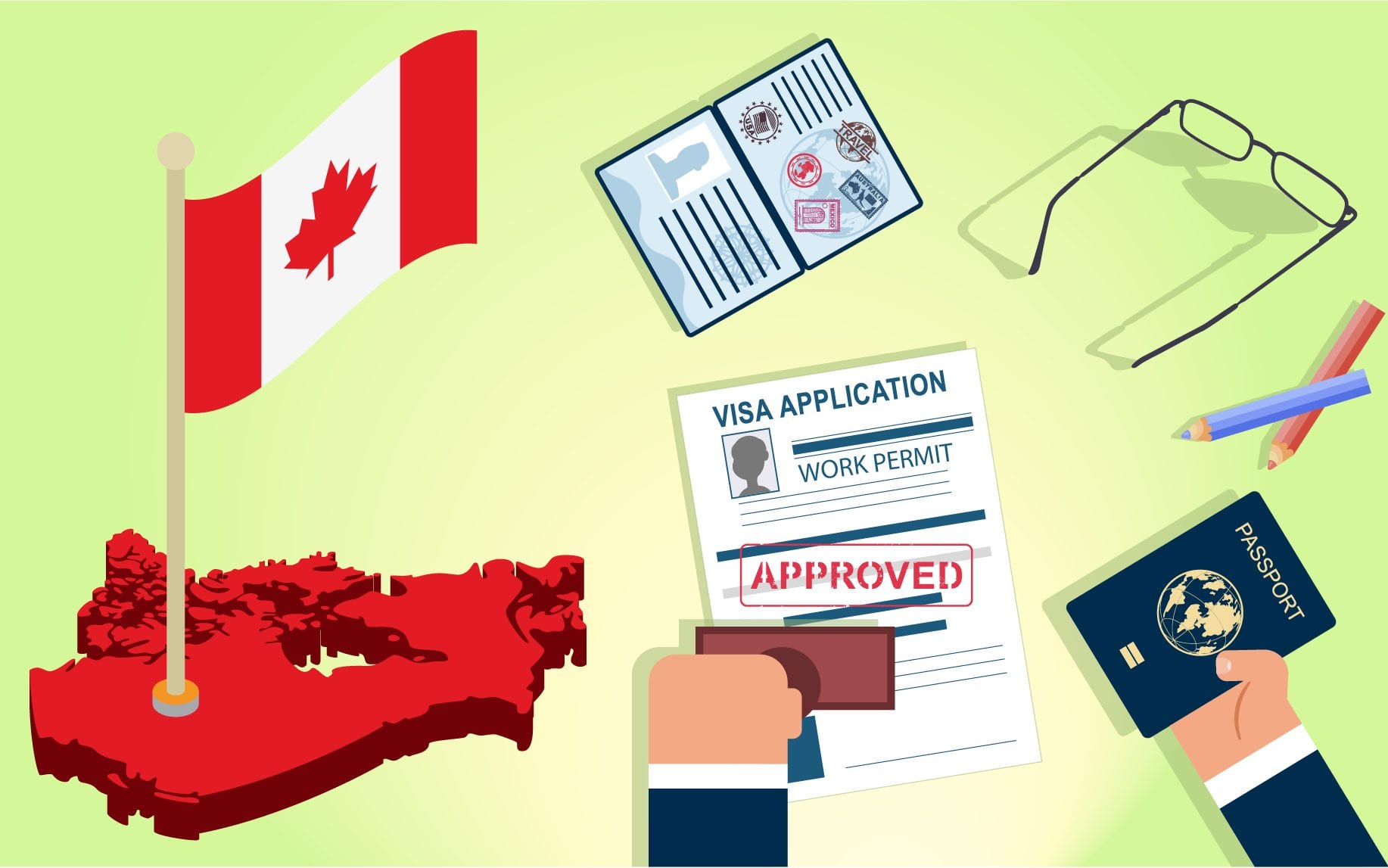In Canada, individuals are on the lookout for Obtaining a Work Permit in Canada for Low-Skilled Workers. With over a million job openings, Canada is eager to welcome immigrants from all around the world.
While the pressing need for qualified persons to fill unfilled high-level positions in the Canadian economy receives a lot of attention, it is crucial not to overlook the contributions of less-skilled workers. Canadian businesses have a strong need for immigrants with a variety of skill sets to maintain economic growth.
Guide to Getting a Sponsored Visa to Work in Canada for Low-Skilled Positions
Find out more about low-skilled work in Canada and how to get a work visa.
It’s important to realize that not all Canadian employers will provide full sponsorship for your visa application. However, they will fill out the LMIA application and send it to ESDC on your behalf.
A labor market impact assessment (LMIA) is…what?
Legally, Canadian businesses cannot hire foreign nationals without first obtaining an LMIA. It will be decided that a foreign worker is needed to fill the position if the LMIA comes back positive.
If you’re set on working in Canada through visa sponsorship, you’ll need to find a company who is ready to sponsor your application and help you through the process.
If your firm agrees to completely sponsor your visa, they may be required to fulfill the following conditions:
- Buying an Airline Ticket
- Helping to set up living quarters
- Offer health coverage for a set amount of time.
- Help with signing up for a provincial insurance program for workplace safety
Find Out If Your Occupation Requires a NOC Code
When it comes to immigration, Canada’s original focus was on those with NOC 0, A, and B jobs. NOC 0 refers to management positions, NOC A to those that require a university degree, and NOC B to those that often require some college or an apprenticeship.
It should be emphasized, however, that if your occupation falls within NOC codes C or D, you have a number of options for immigrating to Canada. Concerns about a lack of available workers can be effectively countered through the use of economic immigration. A high school graduation is typically required for entry-level NOC C occupations. On the other hand, NOC D requires learning on the job. Some examples of NOC C occupations include butchers, truck drivers, and food service workers. NOC D occupations include, but are not limited to, fruit pickers, housekeepers, and oil field workers.
How does the NOC work?
Canada uses the National Occupational Classification (NOC) system to categorize jobs according to their required degree of education and training. However, the Training, Education, Experience, and Responsibilities (TEER) system will take its place by the end of 2022.
Canada Offers Some Semiskilled and Low-Skilled Job Possibilities
- Nomenclature of Occupational Classification: 3413
- Helping Professionals (NOC 4411 and NOC 4412)
- The NAICS code for shops that sell and prepare meat and fish for human consumption is 6331.
- Waiters and waitresses (NOC 6513)
- Truck drivers (NOC 7511) and construction trades assistants and laborers (NOC 7611) are two examples of occupational groups.
- Field Hands, Across All Specialties (NOC 8431)
- Staff members in establishments engaged in fish and shellfish processing (NOC 9463)
- Those involved in the preparation of food, drink, and similar items (NOC 9617)
- Machine Operators (Group 94 of the Major NOC)
Find Out What It Takes to Find Work in Canada.
Keep in mind that working in Canada requires both a job offer and a valid Canadian work permit. Caretakers, farmers, and other low-wage workers have their own specialized pathways into the Temporary Foreign Worker Program (TFWP), which aids in filling critical labor gaps. You can apply for a work permit in one of these ways if you already have a job offer in Canada.
Look for a Course that Suits Your Needs
Many provincial programs allow foreign workers to apply for permanent residence in Canada as unskilled, low-skilled, or semi-skilled workers in accordance with the terms of their employment contracts. The industries or fields that are looking for these people vary by location. The Temporary Foreign Worker Program allows foreign nationals to reside and work in Canada for a specified period of time.
Let’s talk about the various training opportunities for the unskilled.
TFWP stands for “Temporary Foreign Worker Program”
Canada’s economy benefits from the TFWP since skilled workers from abroad can be brought in to fill temporary positions. Canadian businesses rely significantly on this program when they need to hire temporary foreign workers.
Home Care Providers’ Pilot Project
Two home care worker immigration pilot programs are now active in Canada.
Working in home care for children means lending a hand to busy parents. It’s possible that you’ll also need to pitch in with the housework. The following occupations fall under this umbrella:
Childcare provider (babysitter, nanny, or live-in caretaker)
Home-based caretaker of children
Adoptive parent
Helping the elderly, the disabled, and those who have recently undergone medical procedures are all part of a home care worker’s responsibilities. Caregiving tasks include feeding, bathing, preparing meals, and giving medications. Employment opportunities in this field include:
Housekeeper
- Caregiver in the home
- In-home caregiving services
- Personal or family caregiver
Agricultural Seasonal Worker Program
Working in the top LMIA-qualified occupations in the north is possible through the Seasonal Agricultural Worker Program, which provides workers with employer-specific work permits. This program permits Canadian businesses to hire temporary foreign workers if they are unable to find suitable Canadian candidates. A maximum of eight months of employment with a foreign worker may be granted by an employer.
